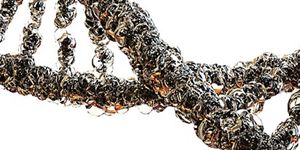Does logging the whole tree make a difference environmentally?
There has long been controversy regarding the adverse effects of logging, especially concerning the practice of whole-tree skidding, which removes the branches and treetrops of trees for electrical power generation. But the lead author of a new study published in the journal Forest Ecology and Management wanted to look closer at that idea. "People think, 'It's bad enough to log, and now you are going to take away the branches that decay and then nurture the ecosystem?” said Robert Froese. “But we wondered, what really is the role of branches?"
Froese, a scientist at Michigan Technological University, decided to investigate that idea with the intent of informing policy on better logging practices and land management. To do so, he and his team looked at 29 aspen stands in Michigan's Upper Peninsula, all of which had been logged within the last 40 years. Some of the stands represented areas where whole-tree skidding was practiced, others represented areas where only the logs had been harvested.
The hypothesis that the Froese and his team started out with was that plant diversity would go down in stands where whole-tree skidding was practiced. That was based on the idea that perhaps the tops and branches of trees that are left behind in logging fall to the forest floor and end up becoming nitrogen that fertilizes the soil. But in fact, their hypothesis was all wrong.
It turns out that those branches and treetops don’t really make much of a difference at all. "What we found is nothing, essentially," Froese says. In fact, it seemed that in the stands where whole-tree skidding occurred, the secondary growth, or trees and understory vegetation that grew back after logging, was even a bit more diverse than in the other stands. But why would this be?
Though the scientists haven’t fully concluded the reasoning behind their findings, they theorize that removing the logging residues, as the branches and treetops are called in whole-tree skidding, disturbs the soil more so than in normal logging practices. This soil disturbance could make nitrogen more available for the smaller plants left behind, allowing them to thrive. (Watch the video below to understand the process visually.) Froese added, “We've been asked if the diversity increased because of an uptick in invasive species, but we didn't find that."
Another finding that the study resulted in was in regards to aspen regeneration in areas where cut-to-length logging is practiced. Cut-to-length logging refers to a method in which trees are delimbed and cut to length directly at the stump. As Science Daily explains, in this practice, “the branches are left behind, and the log is transported along a narrow trail to a landing near a road.” This technique is supposed to protect fragile ecosystems like wetlands, but the research team found that this type of logging is actually inhibiting aspen regeneration. Not only are there fewer trees that grow back after cut-to-length logging, but those individuals are 20% shorter.
From this discovery, the scientists were able to recommend some suggestions for maintaining productivity and preserving vulnerable habitats. One such recommendation is that fragile forests should only be logged in the winter when the ground is frozen.
Sources: Science Daily, Forest Science, Forest Ecology and Management









